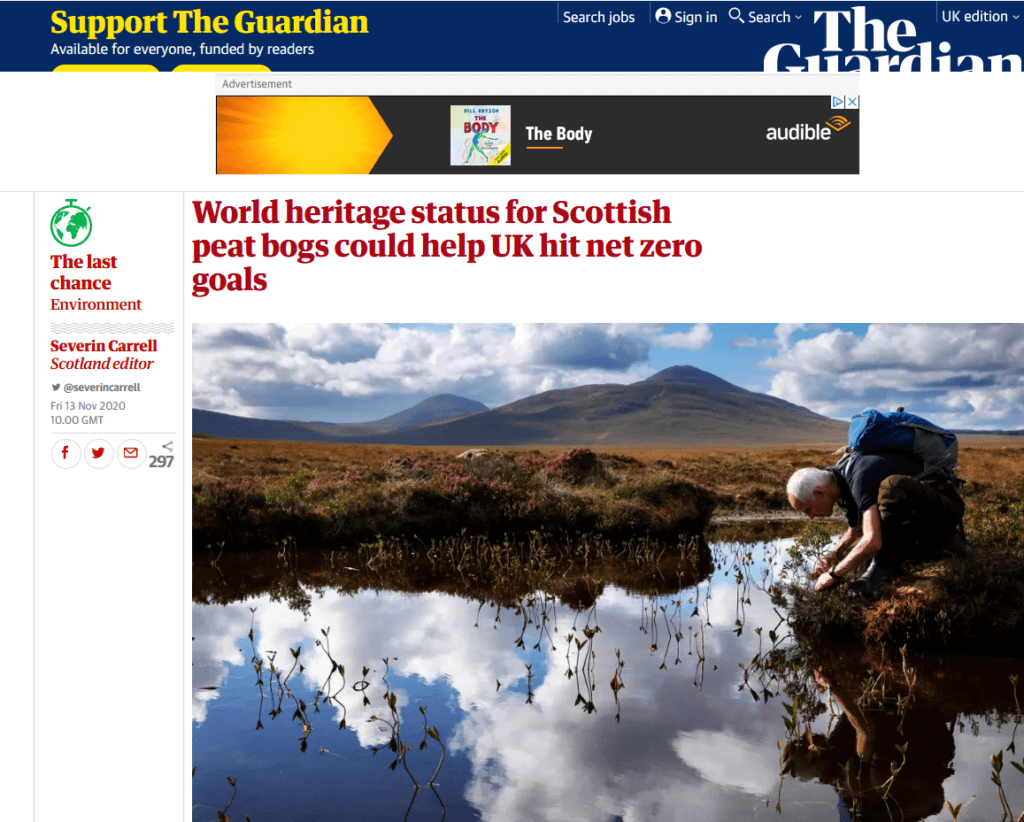
I was pleased to read in the Guardian that my old stomping grounds of the Flow Country (see Fighting for Birds, Chapter 2) might be edging towards World Heritage Site status. It’s a bit like when an old friend gets a gong in an honours list – it’s not necessarily that one thinks the gong is that valuable, nor is it always given to the right people, but it’s nice when the right people, and place, get recognition.
I could take you to the scene of the photograph above which is, unless I am mistaken, looking west towards the two Ben Griams and somewhere out of site is Strath Halladale and Forsinard Station. I’ve sometimes, but rarely, seen it on such an attractive day!
Can you list the other UK World Heritage sites? I could do fewer than a handful, quite honestly, and one of those, the Lake District, is only because it is so unworthy of the status being a knackered landscape.
But recognition of the Flow Country would be a good thing – is it really the largest expanse of blanket bog in the world? No wonder I got very fit walking over it in 1986! Let’s recognise it and make sure its carbon is safeguarded for ever.
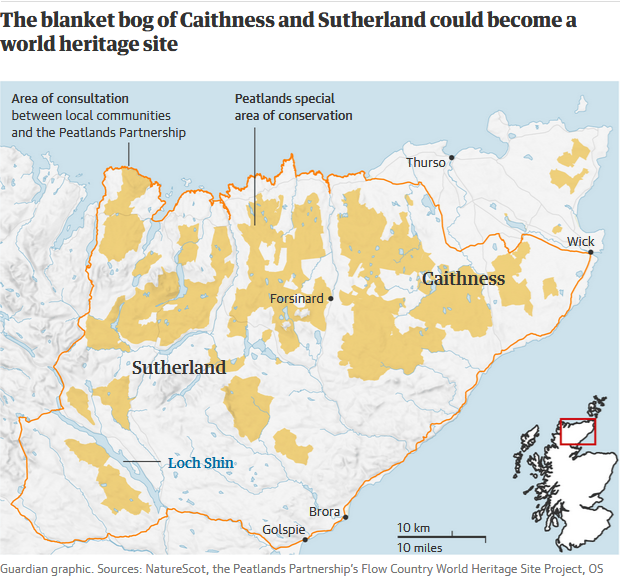
It would be quite a turnaround in 40 years. The attraction of the Flow Country was, until the 1980s, mainly as a remote area, far from Inverness let alone Edinburgh or London, where you could get away from it all in the rolling peatland landscape which straddles the border of Sutherland and Caithness. Nowhere near as dramatic as the peaks further west, but holding, the cognoscenti would say, its own more subtle attraction.
But in the 1980s the area became a battle ground as it was rather cleverly pounced upon as an unlikely place to make money from forestry. Unlikely, because the Flows aren’t the best places to grow trees, but that didn’t really matter as land was cheap, tax relief was high, grants were forthcoming, and the size of the crop didn’t matter too much. Chancellor of the Exchequer, Nigel Lawson, reformed the tax system in 1989 and most afforestation in the area ground to a halt but not before huge areas had been ploughed with massively impressive machinery for tree planting. I remember sitting on a hump of lichen not that far from where the photograph above was taken and looking at the peat being turned over for the first time ever by massive ploughs towed by caterpillar track tractors and the water running down the new channels. The parallel black lines of exposed peat were said to be sign of progress but they were a sign of ignorance of what was important in life.
Back in the 1980s we would have said that the wading bird populations of the Flows, the high densities of Greenshank, Golden Plover and Dunlin in particular, were what made the place special (with a few nice plants and lots of soggy peat).
Now, we realise that peat is worth something like its weight in gold as a carbon store. That is why this place should have World Heritage status. And if that did arrive then people across the world would raise eyebrows to see the land between Lairg and Thurso and Golspie and Tongue treated on a par with Yellowstone, the Great Barrier Reef and the Western Ghats, and they’d learn a bit about our hidden gem at the top of the British mainland.
Here are a couple of earlier blogs about the Flows; here and especially this one which shows what good work Forestry and Land Scotland is doing in peatland restoration).
Meanwhile, a bit further south, do you remember Miles King’s guest blog here a week ago – click here – about a rather smaller peatland ploughed and planted with trees with Forestry Commission approval?
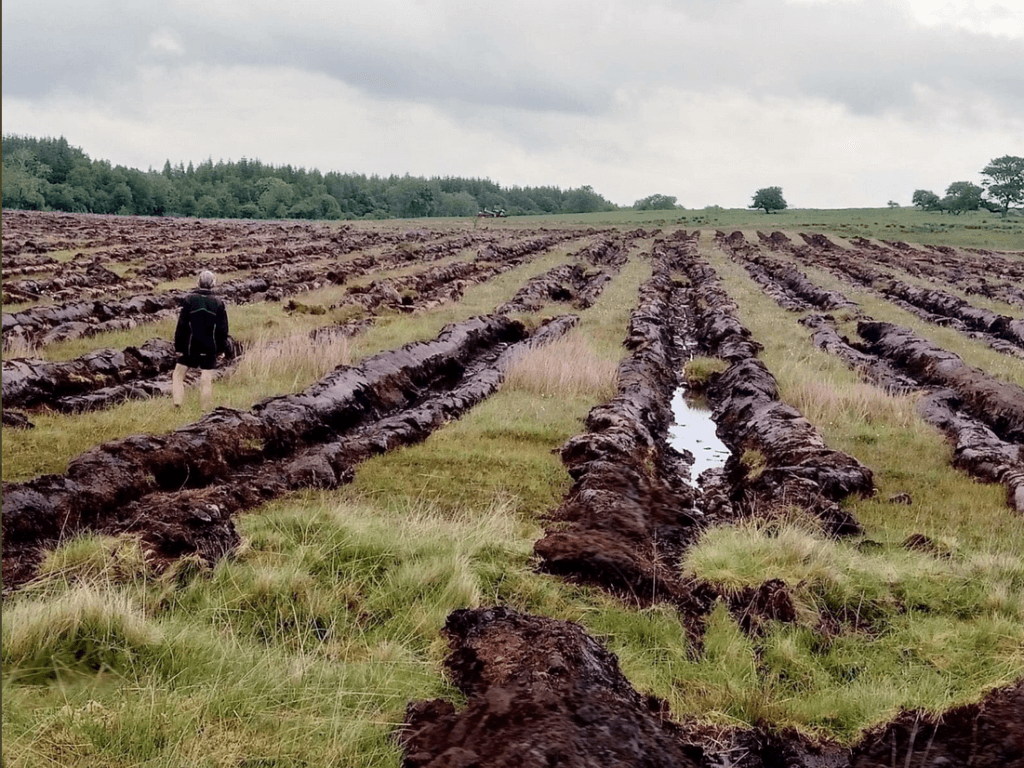
That blog seems to have caused red faces in Forestry Commission and DEFRA see this piece in the Daily Telegraph:
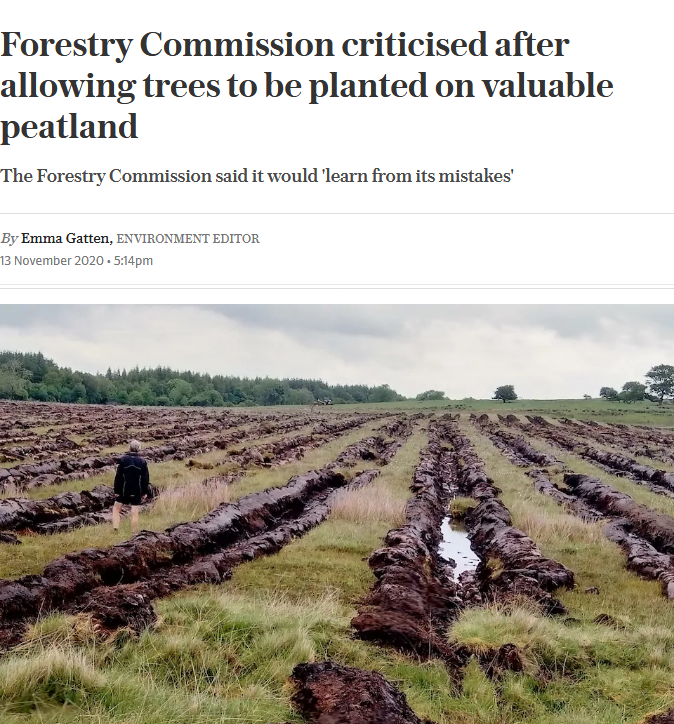
Film cameras are reported to have been in the area…
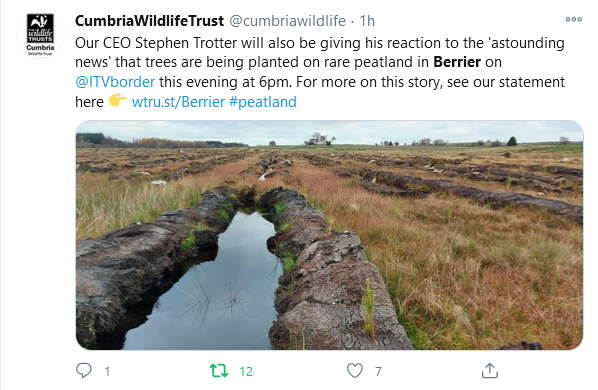
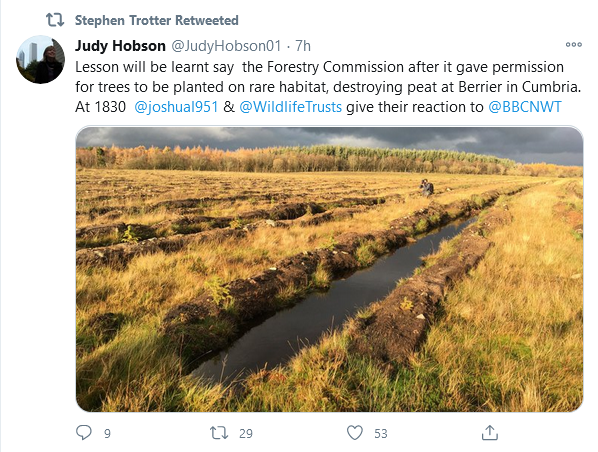
And to bring this post full circle…
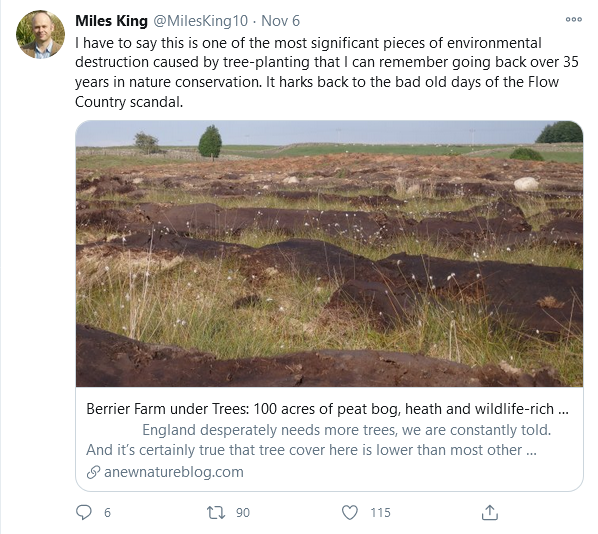
‘Black darter dragonfly, the gold-ringed dragonfly and four-spotted chaser dart rest on the rocks and leaves. The pools attract rare waders such as dunlin, plover and the red-throated diver, while squadrons of pink-footed and greylag geese fly in to nest and breed, their cries echoing over the gently undulating landscape.’
If Black Darter has to have the word ‘dragonfly’ after it then so does Four-spotted Chaser.
‘ dart rest on the rocks and leaves’ Shouldn’t that be dart, rest on the rocks and leaves’
It is a Golden-ringed Dragonfly
Dunlin is not rare
What is a ‘plover’?
Red-throated Diver isn’t rare
‘greylag geese fly in’
implies they are migrants.
‘Nest and breed’?
Couldn’t read further.
If these photos are recent, then rescind the permission, fold back the damaged peat furrows and don’t plant the bloody things. If it has been planted, pull them up while still saplings instead of trying to restore an even bigger mess in the future. What is wrong with these people? What don’t they understand about CO2 STORE!!
And breath….
Time for Extinction Rebellion to do some useful direct action?
The only good thing to come out of this is some small but useful publicity around the principle of “the right tree in the right place”.
Sadly it points up again the inability of the organisations that ought to be in the forefront of the fight against the climate and ecological emergency to actually make any meaningful difference. Largely, it has to be said, as a result of a decade of budgets cuts and the consequent hemorrhaging of knowledge, skills and experience.
The problem – and the solution – remain much the same as 30 years ago – which is a disaster and a failure on all sides, not just forestry.
As we (Avery & leslie) pointed out in Birds and Forestry the root cause of the Flow Country was agricultural policy – which refused to release land which even the big landowners weren’t claiming was viable for forestry.
Today everyone assumes new planting takes up where it left off – resulting in the disaster in Cumbria.
If there is to be more ‘commercial’ planting in the uplands it needs to be far further down the hill – the moors need a bit more native woodland and scrub but – bluntly – the higher moors important for upland birds aren’t that good for trees. The last thing we need is more new plantations that blow over.
Look at early (1919-1940) Fc planting and where the big estates planted – that is where we should be growing more trees because that land can grow superb timber – and the big trees that are admired even if they are conifers. Farming throughout the Less favoured areas is totally dependant on subsidy – so lets have a landuse that doesn’t destroy semi-natural habitats and produces a mixed farming and wooded landscape such as you can see in the Welsh Marches.
Hmm,
In my experience, as in right now. FC don’t follow their own guidance and are quick to seek access to Defra and Ministers to brief against any organisation that challenges them.
It is a cop out to blame the behaviours of individuals on budget cuts.
FC need a boot up the backside.
Heritage site or not, i wont be going back any time soon.
Why not? I don’t understand.
The finest area of flow country ( in my opinion), between Forsinard and Thurso, is now almost unrecognisable from its magical state pre- 1986, the last time i was there.
I swore then i would not return, and unless a miracle of habitat restoration occurs,i will keep to that.
Praying for a miracle then!
The FC have been subject to restricted finances (much like NE) since 2010. After the election in 2010 it was proposed that forestry should be (at least partially) sold off into the private sector. That idea (thankfully) got defeated. Once something slips into the private sector FoI legislation starts to become less relevant.
The most magical thing about the Flow Country is the feeling of space. If you get out of the train at Kinbrace and scramble up up Knockfin Heights or better still, get to the top of Ben Armine to the west, you can see forever. On a good day on the top of Morven it’s utterly, utterly silent. So silent you to have to make noise to quiet the ringing in your ears. The view is more or less 50 miles in every direction.
I lived in Seattle for a while and with the Cascade Mountains to the east and the Olympic Mountains to the west it felt downright claustrophobic. The other place I’ve felt the same sense of freedom is out on the high desert in eastern Oregon. (I suspect Tibet is too busy to get the same feeling).
All the sitka spruce and lodgepole pines have to go. Every one.
Knockfin was a big disapointment, great views admittedly, but for many years i had looked at the OS map , wondering at the seemingly hundreds of small pools , that must hold heaven knows how many scarce breeding birds.
As it turned out, they were nearly all deep peat holes with water in them, on drier Heathery ground , not the same as pools on lower ground.
On the way down i saw a Hen Harrier food pass, and watched the female drop into rank heather.